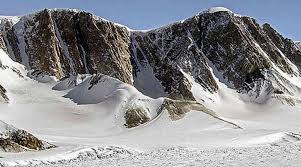Low snow levels in Hindu Kush region and a reminder to break the ice.
The time snow remains on the ground during the winter months — snow persistence, in scientific parlance — in the Himalayan Hindu Kush Region (HKH) has been coming down drastically in recent years. Four of the five winters between 2020-21 and 2024-25 saw below-normal snow persistence. According to a report by the International Centre for Integrated Mountain Development (ICIMOD), released on Monday, the snow level plummeted to a record 23.6 per cent low in the winter of 2024-2025. When it melts in summer, the snow from the mountains contributes about a fourth of the run-off of the 12 major rivers in the region, including the Ganga, Indus, Brahmaputra, Mekong and Amu Darya. The winter season anomalies could, therefore, lead to reduced snow melt and, in turn, affect the water security of more than two billion people across these river basins, the ICIMOD report warns. The fall in river run-offs could have spinoffs on water availability for drinking, irrigation and hydroelectricity generation.
Low snow persistence is a classic fallout of climate change. The Himalayan region, for instance, is particularly vulnerable to high temperatures. Studies have shown that the rise in temperature in the Himalayas has exceeded the global average for at least four decades. An ICIMOD report of 2019 had warned that even if the global temperature rise is limited to the Paris climate pact’s threshold of 1.5 degrees Celsius, the HKW region will witness a warming of 0.3 degrees Celsius. Local developments like changes in the land system — the transformation of farmlands into urban areas — have combined with broader climatic changes to drive the temperature rise. Extra-tropical storms from the Mediterranean, for instance, are known to contribute to winter precipitation in the Himalayas. But weaker western disturbances in recent years seem to have disrupted the timing of seasonal precipitation, leading to shifts in snowfall patterns.
In the coming months and years, policymakers will need a two-pronged approach to climate change. Even as they plan a transition towards greener forms of development, planners will need to find ways to shield people from the adverse effects of global warming. The ICIMOD report should occasion investments in better water management, drought-proofing agriculture, improvements in warning systems and greater regional cooperation on rivers and natural resources. The countries in the Subcontinent and China usually collaborate in global climate forums. However, riparian issues are amongst the most contentious in the region, and ecosystem-based approaches are often hostage to politics. Data-sharing mechanisms on river flows, flood and drought alert systems, even a common renewable energy grid, could reduce people’s vulnerabilities in the face of melting glaciers and declining snowfall.
